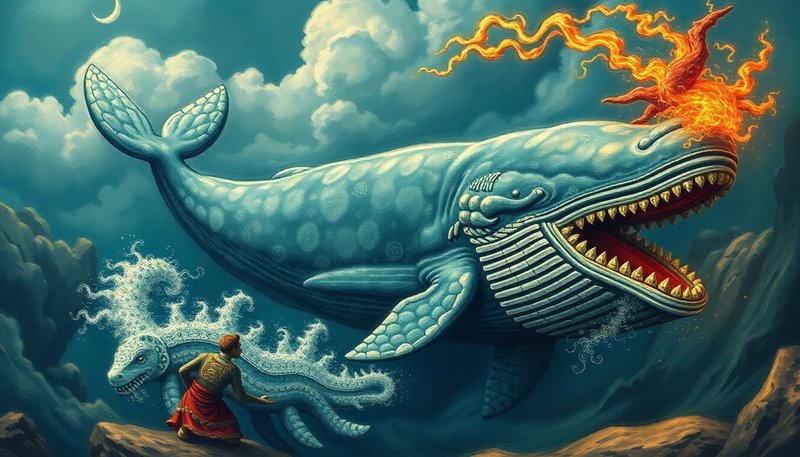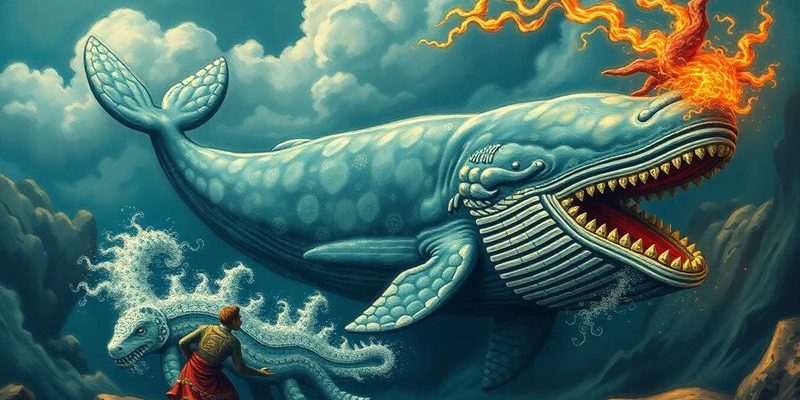
You might find it surprising to discover that different cultures have woven their own stories and beliefs about whales over centuries. These narratives often reflect human experiences, nature’s power, and the deep connections people feel to the ocean. If you’ve ever been curious about what people believe—or perhaps misunderstand—about whales, grab a cup of coffee, and let’s dive into the fascinating world of whale mythology and cultural significance.
The Whale in Indigenous Cultures
Many Indigenous cultures have deep-rooted beliefs and stories surrounding whales. For instance, the Inuit people of the Arctic have revered the bowhead whale for centuries. They see it not just as a physical creature but as a spiritual being that shares a connection with the people. In their beliefs, whales are often viewed as the guardians of the ocean, representing strength and endurance.
In other cultures, like those of the Native American tribes of the Pacific Northwest, whales are depicted in art and storytelling as powerful symbols of wisdom and joy. They are often seen as messengers between humans and the spirit world. Through these narratives, whales encapsulate the balance of life and the interconnectedness of all beings.
Whales in Ancient Mythology
The presence of whales in ancient mythology is equally fascinating. In Norse mythology, the whale is often associated with the god Njord, the deity of the sea, and is believed to have a significant role in the cycle of life and death. This connection emphasizes the whale’s status as a powerful creature that wields influence over both the ocean and human destiny.
Similarly, in Hindu mythology, the whale-like creature called Matsya is said to be the first incarnation of the god Vishnu. According to legend, Matsya saved mankind by guiding the first king’s boat to safety during a great flood. This tale highlights whales not just as animals but as divine beings tied to human survival and redemption.
Modern Myths and Misconceptions
Despite our advancement in science, there are still plenty of myths and misconceptions about whales. For example, many people believe that all whales are huge. While it’s true that species like the blue whale are the largest animals on the planet, there are smaller species, like the dwarf sperm whale, that are not as massive as one might think.
Another common myth is that whales are solitary creatures. In reality, many species, like orcas, live in complex social structures called pods. These pods can consist of family groups that work together to find food and raise their young. Understanding these social dynamics not only reshapes our view of whales but also emphasizes their intelligence and emotional depth.
Whales in Literature and Popular Culture
Whales have inspired countless works in literature and art, often symbolizing freedom, adventure, or the unknown. Herman Melville’s “Moby-Dick” portrays the whale as a formidable force, prompting readers to ponder deeper existential questions about obsession and the human condition. This classic work has shaped the modern perception of whales as both captivating and mysterious.
In popular culture, whales are depicted in films like “Free Willy” and “The Whale,” often highlighting themes of conservation and the beautiful bond between humans and nature. These stories resonate with audiences everywhere, encouraging awareness about the plight of whales and the importance of protecting their habitats.
Whale Conservation and Cultural Significance
As awareness about environmental issues increases, the cultural significance of whales continues to grow. Many Indigenous cultures see whales as symbols of nature’s balance, serving as reminders of the pivotal role that marine life plays in our ecosystems. As a result, stories and beliefs surrounding whales often promote respect for oceanic environments and urge strong conservation efforts.
Modern conservation movements have also adopted whale imagery and narratives to engage the public. Campaigns often use captivating visuals of these creatures to highlight threats like climate change, pollution, and whaling. This has helped bridge the gap between cultural beliefs and urgent modern-day issues—reminding us that protecting whales is not just about saving a species, but about preserving a vital part of our shared cultural heritage.
Whale Watching: A Cultural Experience
Whale watching has become an integral part of coastal tourism, deeply rooted in cultural experiences. Locations like Alaska, Hawaii, and parts of New England offer tours that allow visitors to witness these giants up close. It’s more than just an activity; it’s about connecting with nature and embracing the stories that these creatures carry with them.
Moreover, whale watching tours often emphasize the need for conservation, encouraging guests to respect the whales and their habitats. This fusion of tourism and cultural education enhances public understanding and appreciation of whales, reinforcing their importance in our world.
Whales are more than just incredible marine animals; they are woven into the fabric of human culture, mythology, and conservation. From ancient stories of gods and guardians to modern-day efforts aimed at protecting their future, they remind us of our connection to the natural world. As we continue to explore and learn, it’s crucial to appreciate these creatures not only for their size and beauty but also for the stories they tell and the lessons they offer. So next time you hear a whale song or spot one spouting in the distance, remember there’s a rich history and a world of beliefs just beneath the surface.

